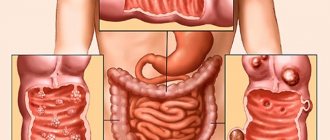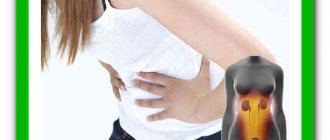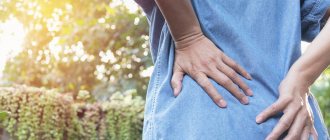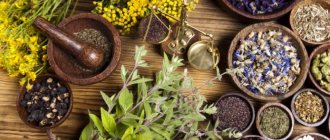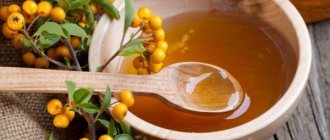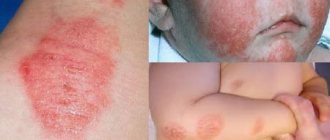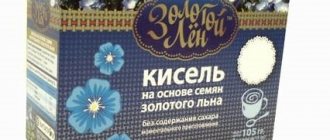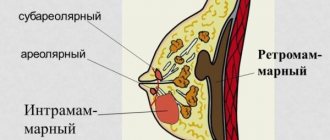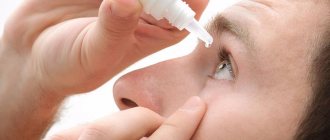One of the most famous diseases since ancient times is epilepsy. Its ancient name is epilepsy. Over many centuries, many methods of treating epilepsy with folk remedies have appeared.
However, the presence of ancient recipes does not cancel a visit to a specialist! Self-medication is unacceptable here, as it can cause serious complications.
In this article we will learn how to cure epilepsy with folk remedies forever and learn more.
Epilepsy is a neurological disease that affects the brain. For reasons it is divided into cryptogenic, symptomatic and idiopathic forms.
There is an opinion that it is incurable, but modern medications relieve attacks in 60% of patients.
How does epilepsy manifest?
The disease manifests itself in characteristic seizures that are difficult to confuse with something else. In the future, specific personality disorders and even dementia may occur.
Special psychoses are likely - delusions and hallucinations, fear, aggressiveness, melancholy. A person may not know about the disease. Therefore, others need to notice signs of the disease.
Epilepsy in adults
Epileptic seizures that appear after twenty years of age are usually symptomatic. The causes of epilepsy may be the following (for more details, see causes of epilepsy):
- head injuries
- tumors
- aneurysm (see cerebral aneurysm)
- stroke (see left and right side stroke)
- brain abscess
- meningitis, encephalitis (see first signs of meningitis)
- or inflammatory granulomas
Symptoms of epilepsy in adults include various forms of seizures. When the epileptic focus is located in clearly defined areas of the brain (frontal, parietal, temporal, occipital epilepsy), seizures of this kind are called focal or partial. A pathological change in the bioelectrical activity of the entire brain provokes generalized attacks of epilepsy.
Classification of generalized seizures: absences, tonic-clonic, myoclonic, clonic, tonic, atonic.
The most typical for the disease is a grand mal epileptic seizure, which begins suddenly and is not caused by changes in external factors:
- The appearance of an aura (unusual sensations of a different nature) for a few seconds indicates the onset of a seizure.
- A person falls unconscious with a characteristic loud cry, which is explained by spasm of the glottis and contraction of the muscles of the diaphragm.
- Breathing stops.
- Tonic convulsions begin (15-20 seconds): the muscles are tense, the body and limbs are stretched, the head is thrown back.
- The veins in the neck swell, the jaws are clenched, the patient’s face is deathly pale.
- This is followed by the clonic phase (2-3 minutes), manifested by jerky convulsions of the whole body.
- Recession of the tongue, accumulation of saliva and hoarse breathing were noted.
- Then the cyanosis slowly disappears and foam is released from the mouth (often with blood - from biting the tongue).
- The cramps gradually subside, and the body relaxes.
- At the end of the attack, the patient’s pupils are dilated and he does not react to anything.
- Involuntary urination is often observed.
- After a few minutes, consciousness returns, a feeling of weakness, lethargy, and drowsiness appears. The person remembers nothing about the seizure.
Before an attack, warning signs appear 1-2 days before: headache, poor health, increased irritability.
In cases where the seizures are prolonged, occur one after another and the person does not regain consciousness, the so-called status epilepticus occurs.
The most common cause of focal seizures are tumors in the temporal lobe - temporal lobe epilepsy, the symptoms of which begin with an autonomic aura:
- nausea
- stomach pain, heart
- cardiopalmus
- sweating
- labored breathing
The patient’s consciousness changes: thoughts lose connection with previous actions, usual interests and the real environment around him. A person is unpredictable, his personality seems to change.
An attack of temporal lobe epilepsy can last several minutes, or be prolonged (lasting hours, days), which often leads to severe personality changes.
Epilepsy is one of the most common neurological diseases. It is 10 times more common than multiple sclerosis and 100 times more common than motor neuron disease (amyotrophic lateral sclerosis).
Causes of seizures
The exact cause of the disease is unknown. But it is precisely established how seizures occur.
Patients experience increased electrical discharges in neurons. Different areas are more excited, which is why different symptoms are observed.
Great medical encyclopedia about epilepsy
Epilepsy (epilepsia; Greek epilepsia grasping, epilepsy; synonym: morbus sacer, morbus divinus, “falling” disease) is a chronic, polyetiological disease characterized by repeated convulsive and (or) psychopathological paroxysms and often personality changes. Epilepsy is much more common in childhood and adolescence (patients at this age make up approximately 47-68% of the total number of patients with epilepsy).
Etiology and pathogenesis. Is epilepsy a hereditary disease? Most researchers believe that it is not epilepsy itself that is inherited, but only a certain degree of convulsive readiness, a predisposition that can lead to epileptic seizures under the influence of various external and internal factors. The results of clinical-electrophysiological, radiographic and tomographic studies showed that for the development of epilepsy as a disease with a progressive course, the presence of a stable focus of epileptic activity, caused by organic damage to the brain, is necessary. The causes of cerebral pathology in epilepsy can be congenital malformations, maternal diseases during pregnancy causing fetal hypoxia (toxicosis of pregnancy, infectious diseases, chronic heart and lung diseases), Rh-conflict pregnancy, birth injuries, birth asphyxia, postnatal neuroinfections, neurotoxicosis . Among the numerous pathological processes that cause the development of epilepsy, it is worth highlighting the processes that occur with the formation of a scar between the brain and its membranes. Epilepsy can be observed in cerebrovascular accidents, vascular dysplasia, primary and metastatic brain tumors, traumatic brain injuries, and the consequences of neurosurgical operations.
Source: Great Medical Encyclopedia (BME), edited by Petrovsky B.V., 3rd edition / M.: Soviet Encyclopedia, 1988. - 557 pp.: ill.
Symptoms and signs of the disease
The most well-known sign is a person falling and convulsing. But you should be aware of other symptoms: lack of reaction to others, sudden freezing, spontaneous and uncontrollable movements. It seems to others that all this makes sense.
With proper treatment, most patients live seizure-free. And a fair question arises: “What folk remedies can cure epilepsy forever?”
Reviews
Traditional methods of combating epilepsy have helped many people cope with the disease.
We recommend reading: Pinched sciatic nerve - symptoms and treatment
A few reviews about home treatment:
The main thing is to find out the cause of epilepsy before starting any treatment. I needed to change jobs and take a course of valerian infusion. Therefore, you should not immediately agree to harmful medications; perhaps it will be enough to change your lifestyle.
Anatoly, 32 years old
Among homemade recipes, I only trust soothing mixtures with apricot kernels. It was these methods that helped cure my son.
Tamila, 41 years old
Therapeutic baths for epilepsy
An obligatory part of treatment with folk remedies. This method gives a relaxing effect. But their number cannot exceed 15.
Add 300 grams of pine needles to 2 liters of water. Boil the decoction. Then filter and dilute with water at a temperature of 38. Suitable for children and adults, you can do it once every 4 days.
For 1 liter of water you need to add 200 grams of lemon balm. Daily for 15 minutes.
Peppermint tincture: step-by-step description of production and instructions for using the tincture (95 photos and videos)Anti-seizure drugs - causes of seizures, anti-convulsant drugs, classification of drugs and treatment with tablets (95 photos)
Remedies for seizures - causes, treatment and features of taking medications (115 photos)
You need a handful of valerian officinalis roots, which is added to 1 liter of water and boiled for 10 minutes. Strain and dilute with water. Use this remedy once every 2 days.
As we can see, some folk remedies for epilepsy are also suitable for children.
Objectives of conservative treatment of epilepsy
Epilepsy is usually treated conservatively or surgically. Alternative treatment of epilepsy is also possible, based on the use of leaves, roots, seeds of herbs, their infusions, decoctions, collections, bee products, etc.
Research has proven that epilepsy is 50-80% curable. Properly selected drug treatment can achieve stable remission. Newly diagnosed epilepsy with subsequent treatment after the first course of therapy in 60% of cases no longer bothered patients, or receded for 2-5 years.
The conservative method of treating the disease mainly involves taking antiepileptic drugs. Therapy goals:
- Correct differential diagnosis of the form of epilepsy and seizures, which determines the adequate selection of medications.
- Identification of the cause of epilepsy (symptomatic form) - exclusion of a structural defect of the brain (tumor, aneurysm).
- Elimination of factors that provoke seizures (alcohol, overexertion, hyperthermia, lack of sleep).
- Relief of seizure or status epilepticus. This is done by taking anticonvulsant medications (one or a combination) and providing first aid when a seizure occurs. It is mandatory to control the patency of the airway and prevent tongue biting, protecting the patient from possible injuries.
Mono-infusions for epilepsy
You will need Art. spoon of medicinal letter It needs to be steamed in a glass of boiling water, kept in a thermos for 2 hours, strained. Drink 1 large spoon 3 times a day. Helps against epilepsy with hypertension and liver disease.
For one and a half cups of hot water, 40 grams of wormwood are kept for 4 hours, wrapped in cloth. Drink 0.5 cups 2 times a day before meals.
For 220 ml. boiling water you will need tbsp. spoon of rue. After an hour, strain. Drink a large spoon 3 times. in a day.
Treatment of atherosclerosis: ways and methods of how to cure blood vessels. The best remedies and drugs for the treatment of atherosclerosis (120 photos)Celandine tincture - treatment with celandine, recipes and application (video + 105 photos)
Treatment of chronic runny nose - step-by-step description and treatment in adults and children (105 photos)
What herbs should I use for epilepsy?
Epilepsy is an ailment for which there are many treatment methods, not the least of which is occupied by alternative medicine, that is, herbal treatment. Thanks to medicinal plants, constant attacks can be significantly alleviated, the course of the disease will not be so acute. Today’s article will focus specifically on the herbs that are used during illness. But before that, I would like to note that herbs for epilepsy affect the human body individually, therefore the effect of their use will be different. To find out “your” grass, you will have to try different plants for some time.
Feverweed
This plant is not included in the official pharmacology; even despite the strong properties of the herb, it can be found among herbalists. Among the main advantages it is worth highlighting anticonvulsant, sedative, antitumor effects, and the fight against spasmodic cough. To prepare the infusion, use 1 tsp. crushed eryngium, filled with 1 tbsp. water. The broth is boiled over a fire for about half an hour, the strained product is taken within 24 hours.
Shiksha
Medical studies have proven the effectiveness of using the plant. It is most often used during herbal medicine for epilepsy. A decoction is prepared from the herb, consisting of a tablespoon of finely ground leaves and a glass of water. The shiksha is boiled over low heat for 5 minutes, then infused for half an hour. You need to take a tablespoon 5 times a day. There is no need to throw away the herb that you used for the decoction; it can be brewed again, only the boiling and infusion time should be doubled each time. You can use the plant until the decoction has a green-yellow tint during boiling. Next, the used shiksha is replaced with a new portion. The effectiveness of the application may not be noticed immediately; the use of the decoction can last up to several months until the seizures completely stop. An infusion of herbs is used for epilepsy and for prevention - four times a year for a month.
Wintergreen rotundifolia
To treat epilepsy, the herb can be used in the form of a decoction, infusion, or tea. Both the color of wintergreen and its leaves are used. Preparation takes about two hours, there is no need to boil the herb; a tablespoon of the dry plant is poured with a glass of boiled water and left for at least 2 hours, after which it is filtered. You need to use the decoction 3 times a day, taking 2 tablespoons.
Stone berry
To prepare the tincture, you need to pour 100 grams of herb with a liter of alcohol and leave for a month. You should take the tincture for no more than 10 days without a break, then take a break for 10 days and repeat the course again. To relieve symptoms, take 30 drops of tincture before meals. A decoction of the plant also improves the condition. It is prepared as follows: place 1 spoon of stone fruit in a glass of water, simmer for 5 minutes over low heat, and then infuse for an hour. It is recommended to take 1 tablespoon of the decoction before meals.
Maryin root
Another name for the plant is forest peony. To prepare the drug, only the root is taken, which after collection is thoroughly washed, filled with half a liter of vodka or alcohol and infused for 30 days. Even children can take the alcohol tincture, 1-2 drops per day. Adults take 75 drops per day, divided into several doses: 20 in the morning, 25 at lunchtime, 30 in the evening. During use, the drops must be diluted in half a glass of water. The tincture is taken regardless of meals.
St. John's wort
St. John's wort for epilepsy is the most popular plant.
Its frequent use is due to the presence of poison in small quantities necessary for a person with epilepsy. The properties of St. John's wort are not harmful; on the contrary, the plant is used both in its natural form and as a raw material for medical preparations. Remember: herbs for epilepsy may not be combined. For example, if you decide to use St. John's wort for epilepsy, then simultaneous use of oregano is contraindicated. Among the above-mentioned herbal plants, due place is given to St. John's wort for epilepsy. Most often, this particular herb can bring the patient to his senses and alleviate his symptoms. But it is important to remember that any of the traditional methods of treatment requires a special approach. Before using St. John's wort, it is better to consult a doctor, because this plant is not always combined with other herbs and medications.
I would like to say a few words about which herbs are prohibited for epilepsy.
Eucalyptus is considered a potent plant that irritates the human nervous system. It will not benefit a patient with epilepsy. What herbs are not allowed for epilepsy? Without a doubt, mint. The explanation is simple: this plant cannot be used because of its dominant nature; it can reduce the effect of homeopathic medicines that the patient takes during the period of illness. The use of rosemary, especially inhaling the aroma, is not recommended. As it turned out, rosemary increases blood pressure, blood circulation increases, and a sense of peace and balance may be lost. For patients with epilepsy, such symptoms are unacceptable. Fennel, hyssop, sage, tansy, and thuja have a similar effect.
We hope that we have helped to understand the main medicinal herbs that are practiced during the treatment of the disease, and which herbs are not allowed for epilepsy. Be healthy and do not neglect your treatment.
Epilepsy fees
In addition, herbal infusions can be used as folk remedies for epilepsy for adults.
You will need equal parts of valerian (root), chamomile (pharmaceutical) and medicinal calendula flowers, rose hips and chokeberry. Use 15 grams of herbs per glass of hot liquid. Simmer for 20 minutes in a water bath, then strain. They drink 4 rubles. per day 0.5 cups.
The same amount of hop cones, mint (pepper) leaves and lemon balm leaves, sweet clover (herb) and woodruff, as well as elecampane (root). Add 15 g to boiling water (220 ml) and leave until cool. Drink 2 cups per day.
This remedy prevents attacks. Mix wormwood (dried), tea (black, loose leaf) and chamomile flowers in equal proportions. For a liter of boiling water you need 3 large spoons of the drug. Grind before mixing. Leave for 4 hours in a dark place. This is enough for a day.
Photos of folk remedies for epilepsy
Treatment of thrombophlebitis - classification and symptoms of thrombophlebitis. Treatment options with drugs and traditional methods (110 photos)How to treat lichen - a review of the most effective drugs at home (115 photos and videos)
Wormwood medicinal properties - treatment and cleansing of the body with the help of wormwood. Tips for collecting, storing and preparing medicines (95 photos)
Read here! Medicinal properties of oak bark: indications and contraindications for the use of oak bark decoction (70 photos)
Please repost
0
